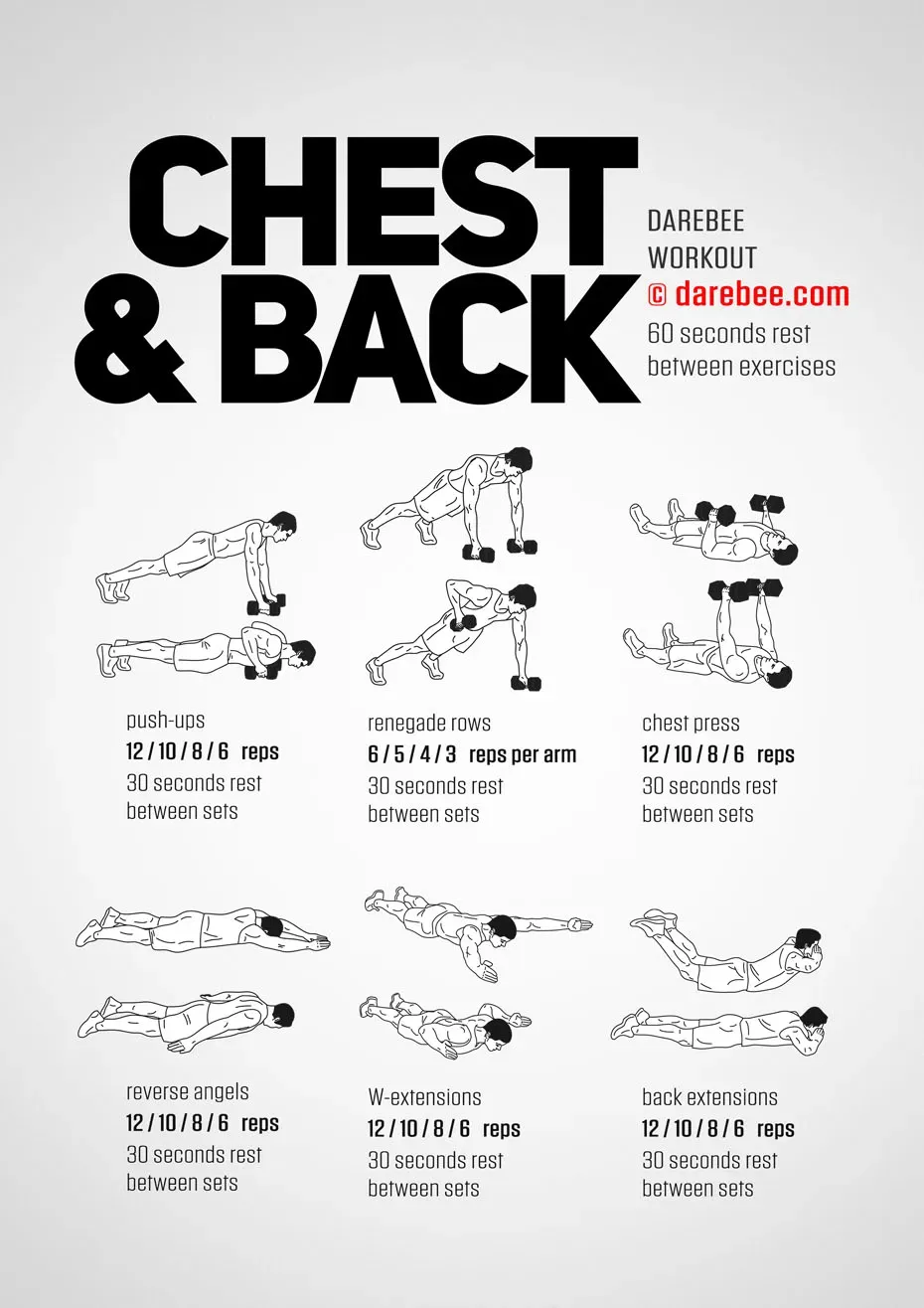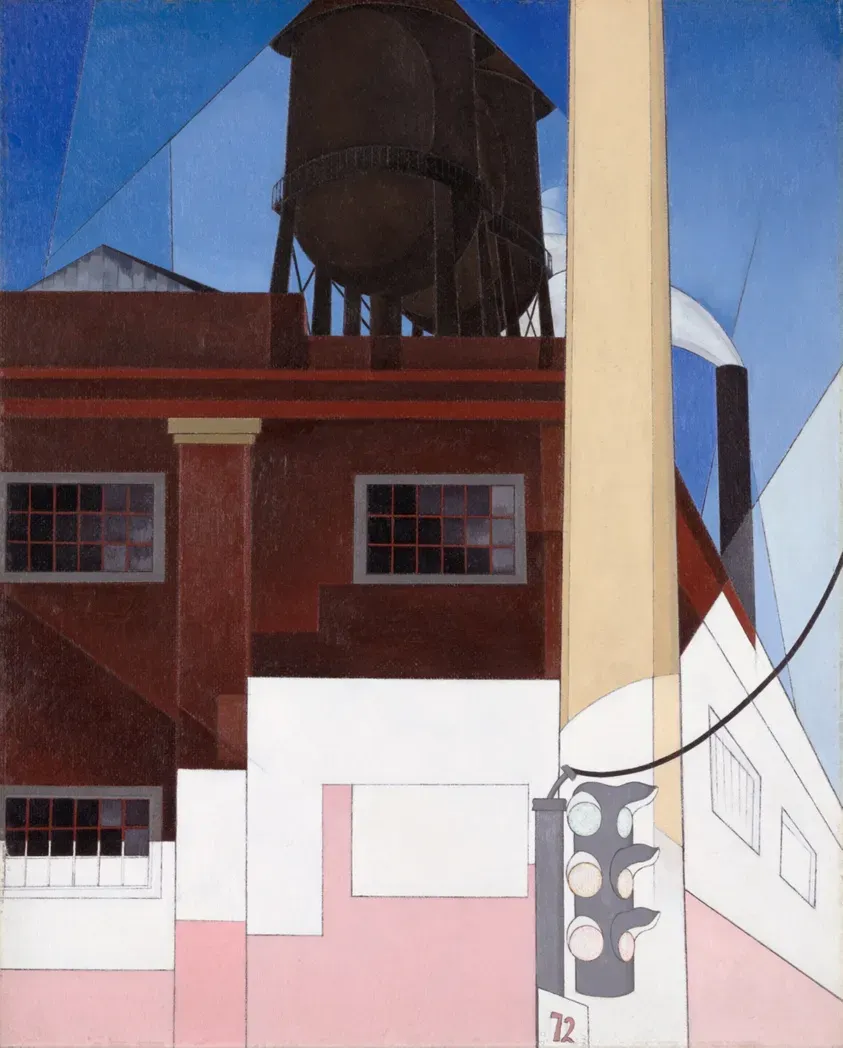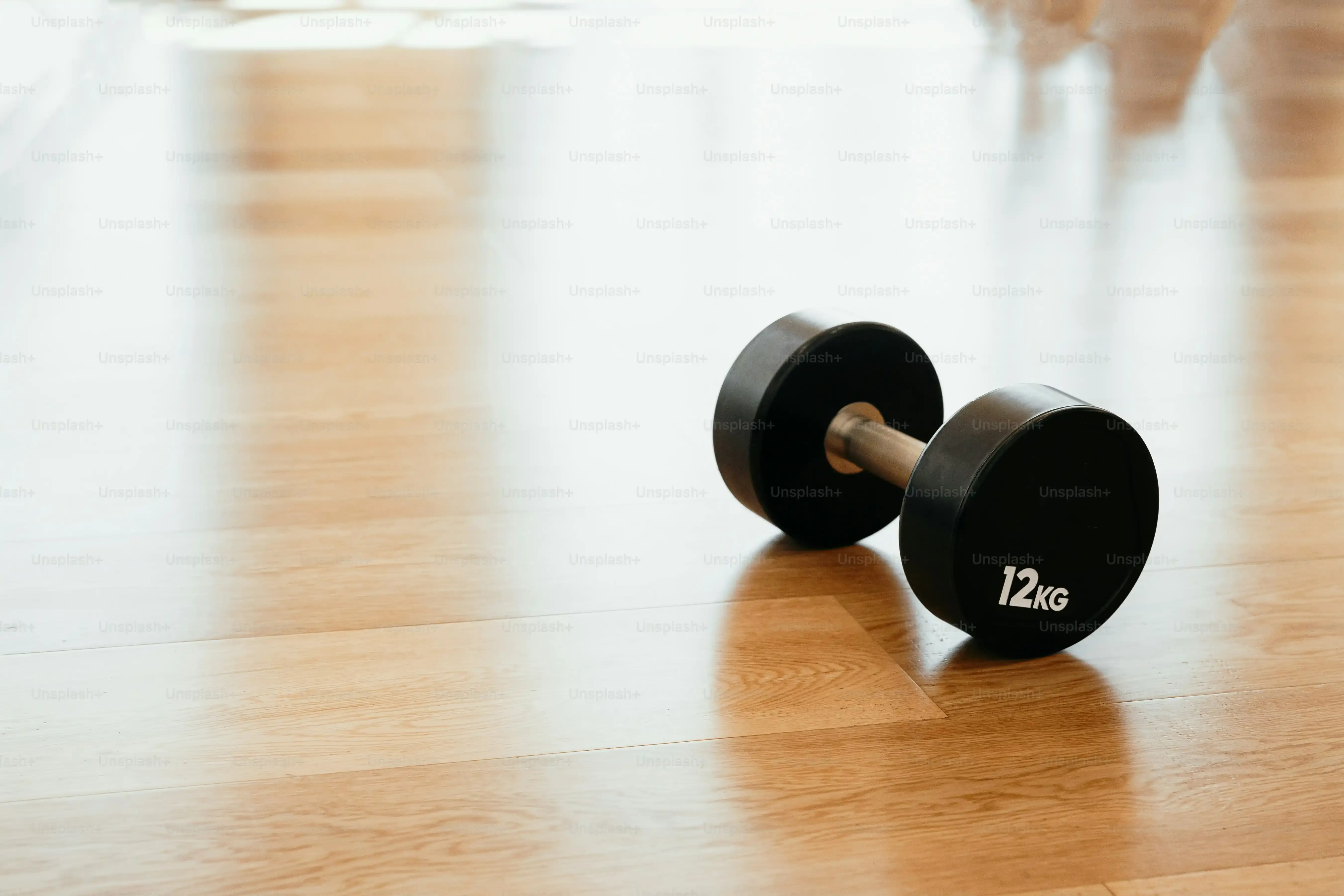Table of Contents
Let's be honest. Getting to the gym is often a hassle. Traffic, crowded machines, that one person who talks on their phone *while* doing curls – sometimes it just feels like too much effort. But ditching the gym doesn't mean ditching your fitness goals, especially when it comes to building a strong, balanced upper body.
Why Bother with an At Home Chest and Back Workout?

Why Bother with an At Home Chest and Back Workout?
Skip the Commute, Build the Muscle
Let's face it, getting to the gym is half the battle for many people. You pack a bag, fight traffic, find parking, then navigate a room full of sweaty strangers. It eats up time you probably don't have. That's precisely why an at home chest and back workout makes so much sense. You roll out of bed, grab a mat (maybe), and you're already there. No excuses about weather, no waiting for equipment, just pure, unadulterated training right in your own space. Think of the hours you'll reclaim.
Beyond the sheer convenience, there's the cost factor. Gym memberships add up. Fancy equipment costs even more. But with bodyweight exercises, which form the foundation of many effective at-home routines, your primary tool is... you. You can build significant strength and muscle mass in your chest and back using push-ups, pull-ups (if you have a bar), rows (using furniture or resistance bands), and more, often for free. It's a practical approach that respects your wallet as much as your time.
Effective Gains Without the Iron
Some folks scoff at bodyweight training, picturing only basic push-ups. They're missing the point entirely. An effective at home chest and back workout leverages gravity and your own mass to create serious resistance. You can modify classic movements like push-ups and rows to increase difficulty significantly, challenging your muscles just as effectively as weights. Elevated push-ups, decline push-ups, inverted rows under a sturdy table – these aren't easy variations; they demand effort and build real strength.
Working your chest and back together in the same session is also smart programming. These are opposing muscle groups (pushing and pulling). Training them in balance helps prevent muscular imbalances that can lead to poor posture and injury. It also allows for efficient workouts, hitting major upper body muscles comprehensively. You build a strong front and a strong back, creating a balanced, powerful physique without needing a full commercial gym at your disposal.
Why bother with an at home chest and back workout? The reasons stack up:
- Saves time and eliminates travel
- Significantly cheaper than gym memberships or home gyms
- Can be done anywhere, anytime
- Bodyweight exercises are surprisingly effective for building strength and muscle
- Promotes balanced upper body development
Gear Up: What You Need for Your At Home Chest and Back Workout

Gear Up: What You Need for Your At Home Chest and Back Workout
The Absolute Bare Minimum (Spoiler: It's You)
let's talk gear for your at home chest and back workout. The beautiful truth? You don't actually *need* much to get started. Your most essential piece of equipment is your own body weight. Think about it: push-ups for chest, bodyweight rows using a sturdy table or counter for back. These fundamental movements have built impressive physiques for decades without a single dumbbell in sight. You can modify these exercises endlessly to make them harder or easier, constantly challenging your muscles.
A decent floor space is helpful, obviously. Enough room to lie down and extend your arms. Maybe a wall for some variations. That's really it for the absolute essentials. Don't let the idea of needing equipment be a barrier. Start with what you have, which is probably everything you need for a solid foundation.
Adding a Few Smart Tools (Optional, But Nice)
While you can crush an at home chest and back workout with zero gear, a few inexpensive items can seriously expand your exercise library and progression options. A pull-up bar that fits in a doorway is gold for hitting the back muscles directly with pulls and chin-ups. Resistance bands, the loop or tube kind, are incredibly versatile. They add resistance to push-ups, can be used for various rowing motions, and are portable enough to take anywhere.
Another handy item? Gymnastic rings or suspension trainers (like a TRX). Hook them over a door or from a sturdy beam, and you unlock a whole new world of bodyweight rows, flyes, and other challenging movements that build stability along with strength. None of this is mandatory from day one, but they're smart investments if you get serious about your home training and want to keep progressing.
Here are a few optional items that can enhance your routine:
- Doorway pull-up bar
- Resistance bands (various tensions)
- Suspension trainer (TRX, rings)
- Gymnastics rings
- Exercise mat (for comfort on hard floors)
Killer Moves: Best Exercises for Your At Home Chest and Back Workout

Killer Moves: Best Exercises for Your At Home Chest and Back Workout
Pushing Power: Chest Builders You Can Do Anywhere
Alright, let's get down to the nitty-gritty: the actual moves that will build your chest and back right at home. For the chest, the undisputed king is the push-up. It's simple, effective, and endlessly scalable. Don't think it's too easy? Try elevating your feet on a chair (decline push-ups) or bringing your hands closer together (diamond push-ups). These variations significantly increase the difficulty, hammering different parts of your chest and triceps. You can also do incline push-ups against a counter or wall if regular ones are too tough initially. Consistency and proper form are key here.
Beyond standard variations, consider plyometric push-ups (explosive pushes off the floor) for power, or single-arm variations (even assisted ones against a wall) for serious strength. The point is, the humble push-up, when done correctly and progressed over time, is a powerhouse for your at home chest and back workout.
Pulling Strength: Back Exercises That Work
Now, onto the back – the forgotten half of the upper body for many home exercisers. While push-ups are easy to jump into, back exercises often require a little creativity or minimal equipment. The bodyweight row is your best friend here. Find a sturdy table you can hang under, or set up a bar between two chairs. Pull your chest towards the edge of the table or bar, squeezing your shoulder blades together. The lower the table or bar, the harder it gets. If you have a doorway pull-up bar, that's fantastic. Pull-ups and chin-ups are phenomenal for building lats and biceps.
No bar or table? Resistance bands come to the rescue. Anchor a band around something stable and perform seated or standing rows. You can even loop one around your feet for seated rows. Don't neglect exercises like Superman holds or variations that work the lower back and spinal erectors, which are crucial for overall back health and posture. Building a strong back is non-negotiable for a balanced physique and injury prevention.
Killer moves for your at home chest and back workout:
- Standard Push-ups
- Incline Push-ups
- Decline Push-ups
- Diamond Push-ups
- Bodyweight Rows (under table/bar)
- Pull-ups/Chin-ups (with bar)
- Resistance Band Rows
- Superman Holds
Beyond the Basics: Adding Variety and Challenge
Once you've mastered the fundamental push and pull movements, it's time to mix things up. For the chest, consider pseudo planche push-ups (hands lower towards the hips) to hit the shoulders and upper chest harder. For the back, if you have rings or a suspension trainer, inverted rows become incredibly versatile, allowing for different grips and angles. Resistance bands can also be used for chest flyes, mimicking dumbbell movements and adding a different stimulus. Don't be afraid to experiment and find variations that challenge you. The goal is continuous progression, whether that's doing more reps, doing harder variations, or increasing time under tension.
Crafting Your Routine: Sample At Home Chest and Back Workouts

Crafting Your Routine: Sample At Home Chest and Back Workouts
Building Your Basic At Home Chest and Back Routine
so you've got the moves down – push-ups, rows, maybe some bands. Now, how do you slap it all together into a coherent at home chest and back workout? Don't overthink it. Start simple. A classic approach is to pair a pushing exercise with a pulling exercise. Do a set of push-ups, rest, then do a set of bodyweight rows. Repeat that pairing for a few rounds. This hits those opposing muscle groups efficiently.
A beginner routine might look like 3 sets of as many push-ups as you can do with good form, immediately followed by 3 sets of as many bodyweight rows as you can do. Rest for 60-90 seconds between those paired sets. That's it. That's a workout. It might not sound fancy, but consistency with basics beats complicated routines you never actually do. My first few months training at home were exactly this simple, and the results were noticeable.
Adding Layers: Structure and Progression
Once you can comfortably do, say, 15-20 reps of your chosen push-up and row variation, it's time to make things tougher. This is where structure comes in. You could do circuits: move from push-ups to rows to maybe band pull-aparts for rear delts, with minimal rest between exercises, resting only after completing one round. Do 3-4 rounds. Or, you can increase the difficulty of the exercises themselves – switch to decline push-ups, or lower the table for your rows. Another method is adding more sets or reducing rest time.
Don't just do the same thing every single time. Your muscles are lazy; they need a reason to get stronger. Provide that reason by constantly challenging them. Maybe one workout is focused on higher reps with moderate difficulty, and the next is fewer reps but with a much harder variation. Variety isn't just the spice of life; it's the fuel for muscle growth when you're doing an at home chest and back workout.
Here's a sample structure to get you started:
- Warm-up (5-10 minutes: arm circles, dynamic stretches)
- Pair 1: Push-up variation + Bodyweight Row variation (3-4 sets, 8-15 reps each)
- Pair 2: Incline Push-up + Band Pull-aparts (3 sets, 10-20 reps each)
- Optional: Core work (planks, leg raises)
- Cool-down (5 minutes: static stretches)
Listen to Your Body, Stay Consistent
The best routine is the one you actually stick to. Consistency trumps intensity initially. Aim for 2-3 at home chest and back workout sessions per week, allowing at least one rest day between them. Your muscles grow when they recover, not when you're tearing them down. Pay attention to how your body feels. Some soreness is normal, but sharp pain is a stop sign. Don't be a hero; modify the exercise or take an extra rest day if needed.
Progress isn't always linear. Some weeks you'll feel strong, others less so. That's normal. The key is showing up consistently. An at home setup removes many of the typical barriers to exercise, so leverage that convenience. Track your progress – write down the exercises, reps, and sets you did. Seeing your numbers improve, even slightly, is incredibly motivating and proves that your living room gains are just as valid as gym gains.
Consistency Over Complicated
So, there you have it. Building a strong chest and back doesn't require a gym membership or a garage full of expensive equipment. It requires consistency and smart exercise selection. An effective at home chest and back workout is entirely achievable with minimal gear and a bit of dedication. Stop waiting for the perfect time or place. The time is now, and the place is wherever you are. Start small, stay consistent, and watch the results appear. It's less complicated than you think.
